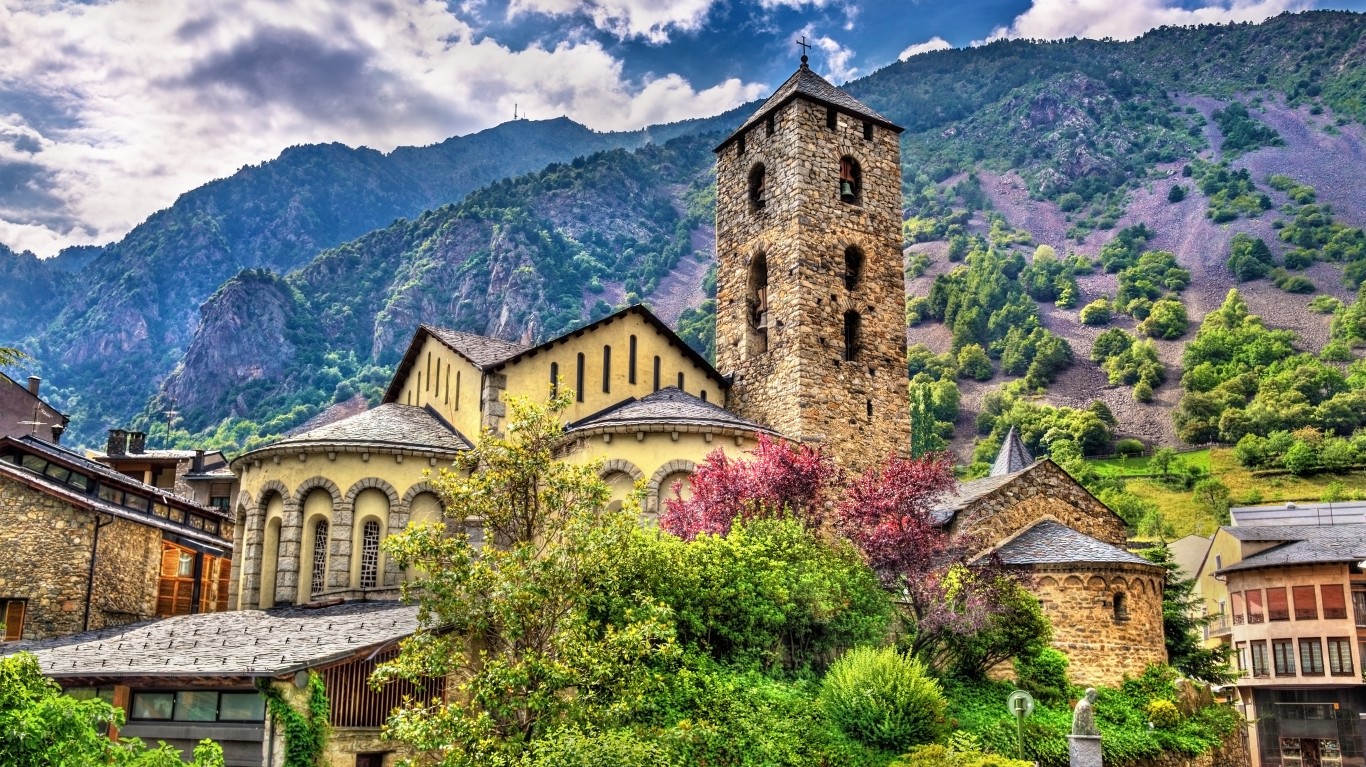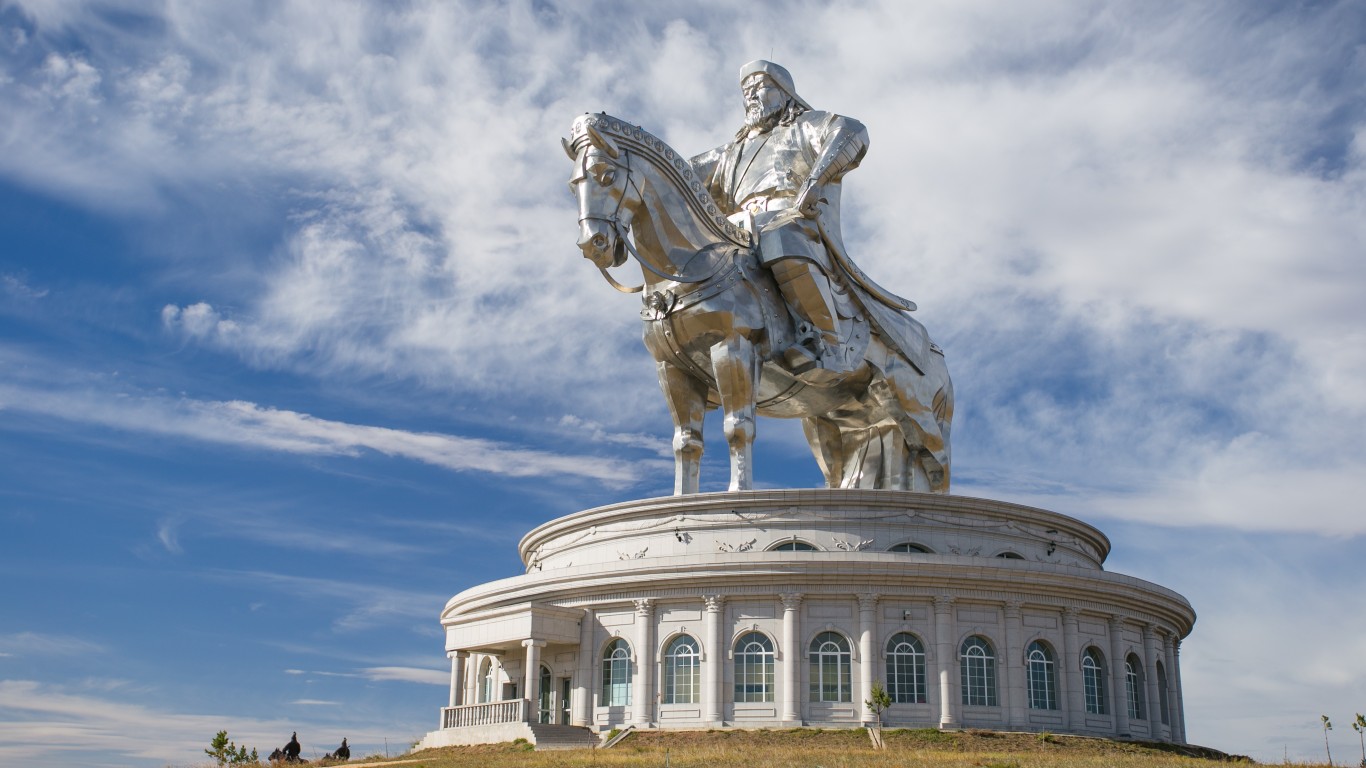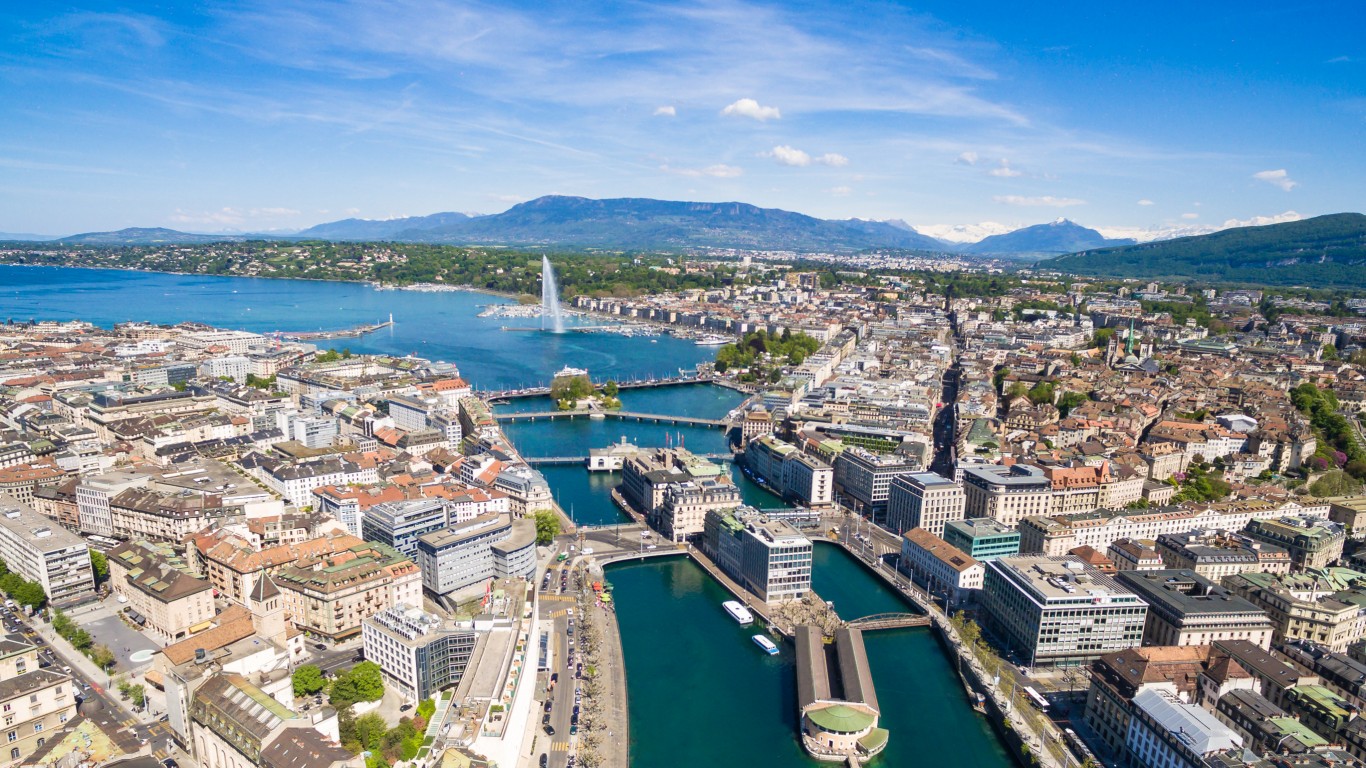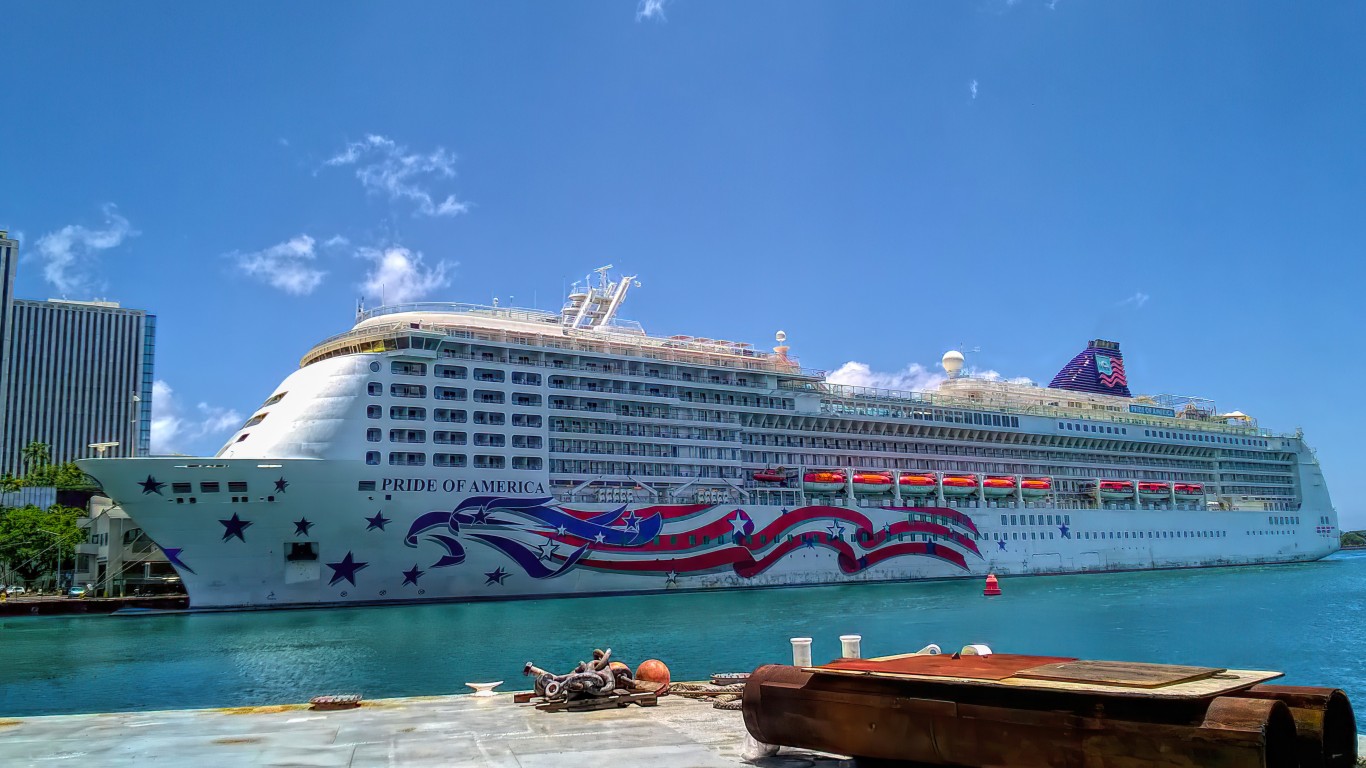
Most countries have seaports, which is a significant advantage to their economies as it cuts down on transportation costs of goods they import and export. Today we’re drawing your attention to 9 countries that don’t have that access to the sea, though. These aren’t all the landlocked countries in the world. We’ve chosen these because they help illustrate how countries become landlocked and the different ways they have managed to survive and sometimes thrive despite their geographic disadvantages.
24/7 Wall St. Insights
- Some landlocked countries lost territory in wars, leaving them landlocked.
- In many cases, countries are landlocked because they are located in mountainous areas that are difficult for outside powers to conquer.
- For these countries to thrive, they must maintain friendly relations with their neighbors, which often means taking a back seat to them internationally
- Also: Discover “The Next NVIDIA
1. Afghanistan

Afghanistan borders Pakistan, Iran, Turkmenistan, Uzbekistan, Tajikistan, and shares a small border with China. Although Alexander the Great conquered it in the 4th century BC, few other invaders can claim the same. In modern times, the British Empire, the Soviet Union, and the United States have all discovered this to be a supremely difficult land to control. Its rough terrain and climate, with high mountains and blistering deserts, make life hell for outsiders while giving an edge to locals who are familiar with it and used to it. Pakistan and India are Afghanistan’s main trading partners, and through their sea access, it can import and export goods.
2. Andorra

This tiny principality is wedged high in the Pyrenees Mountains with Spain on one side and France on the other. All of its trade has to move through one of these countries, as not only does it not have a seaport, but it also has no airport. The President of France (currently Emmanuel Macron) and the Bishop of Urgell (Spain) serve as ceremonial heads of state, but the government is a parliamentary democracy. Andorra has stayed independent nearly 750 years by being cooperative and neutral with both its neighbors. Its economy thrives on tourism and banking, as wealthy people use it as a tax haven.
3. Belarus

Belarus is the last dictatorship in Europe, being under the rule of Alexander Lukashenko since 1994. The country is located in Eastern Europe Between Russia, Lithuania, Poland, and Ukraine. Russia controls territory on both its eastern and western borders, as the enclave of Kaliningrad on the Baltic Sea has been part of Russia since 1945. Belarus is joint with Russia in an organization called the “Union State” that most observers see as a stage toward Russia’s eventual annexation of the country. Belarus is diplomatically and economically isolated from the rest of Europe, so Russia is its main trading partner. Russian troops and aircraft moved through Belarus to attack Ukraine and Russia has placed nuclear weapons there to ensure its defense against NATO expansion.
4. Bolivia

Like many other landlocked countries, Bolivia is located in mountainous terrain that is difficult for other countries to invade and control. It didn’t start out landlocked, though. It had access to the Pacific Ocean by controlling part of the Atacama Desert at the coast. In 1879 Chile went to war with Bolivia and Peru and took control of the desert, and with it, took away Bolivia’s only seaports. Since then, Bolivia has maintained peaceful relations with its neighbors and is able to import and export through their territory.
5. Mongolia

In the 13th and 14th centuries, the Mongol empire became the largest contiguous land empire in history. Led by the notorious Ghengis Khan and his successors, the empire stretched from China across Russia to Eastern Europe as far as Poland and Hungary. It lost nearly all of this territory as it declined until today it is surrounded by China on one side and Russia on the other. Much of the country is a windswept rolling plain. It also includes the major part of the Gobi Desert, which spreads across into China. During the Cold War, Mongolia was particularly aligned with the Soviet Union, which helped it avoid being annexed by China as Tibet was. With China’s growing economic power and political influence, while Russia’s is declining, Mongolia can be expected to be a Chinese vassal in all but name.
6. Switzerland

Switzerland is in the European Alps with Italy to the south, France to the west, and Germany to the northeast. It shares a small border with Austria and Liechtenstein in the east. It has close and friendly relations with all these countries. Switzerland has maintained independence for several reasons. Its mountainous terrain and lack of natural resources make it difficult and unprofitable to invade. It has maintained the strictest neutrality through most of its history. Its citizens have high levels of military training for the defense of their country. During World War II when it was most at threat of a potential German invasion, the Swiss threatened to blow up the railroad tunnels that connected Nazi Germany with Fascist Italy. So it was more worthwhile for the Germans to leave them alone. And finally, in modern times, Switzerland has become a Mecca for business, diplomacy, and international institutions. In these roles, its independence and neutrality are valuable to the world.
Take Charge of Your Retirement In Just A Few Minutes (Sponsor)
Retirement planning doesn’t have to feel overwhelming. The key is finding expert guidance—and SmartAsset’s simple quiz makes it easier than ever for you to connect with a vetted financial advisor.
Here’s how it works:
- Answer a Few Simple Questions. Tell us a bit about your goals and preferences—it only takes a few minutes!
- Get Matched with Vetted Advisors Our smart tool matches you with up to three pre-screened, vetted advisors who serve your area and are held to a fiduciary standard to act in your best interests. Click here to begin
- Choose Your Fit Review their profiles, schedule an introductory call (or meet in person), and select the advisor who feel is right for you.
Why wait? Start building the retirement you’ve always dreamed of. Click here to get started today!
Thank you for reading! Have some feedback for us?
Contact the 24/7 Wall St. editorial team.




